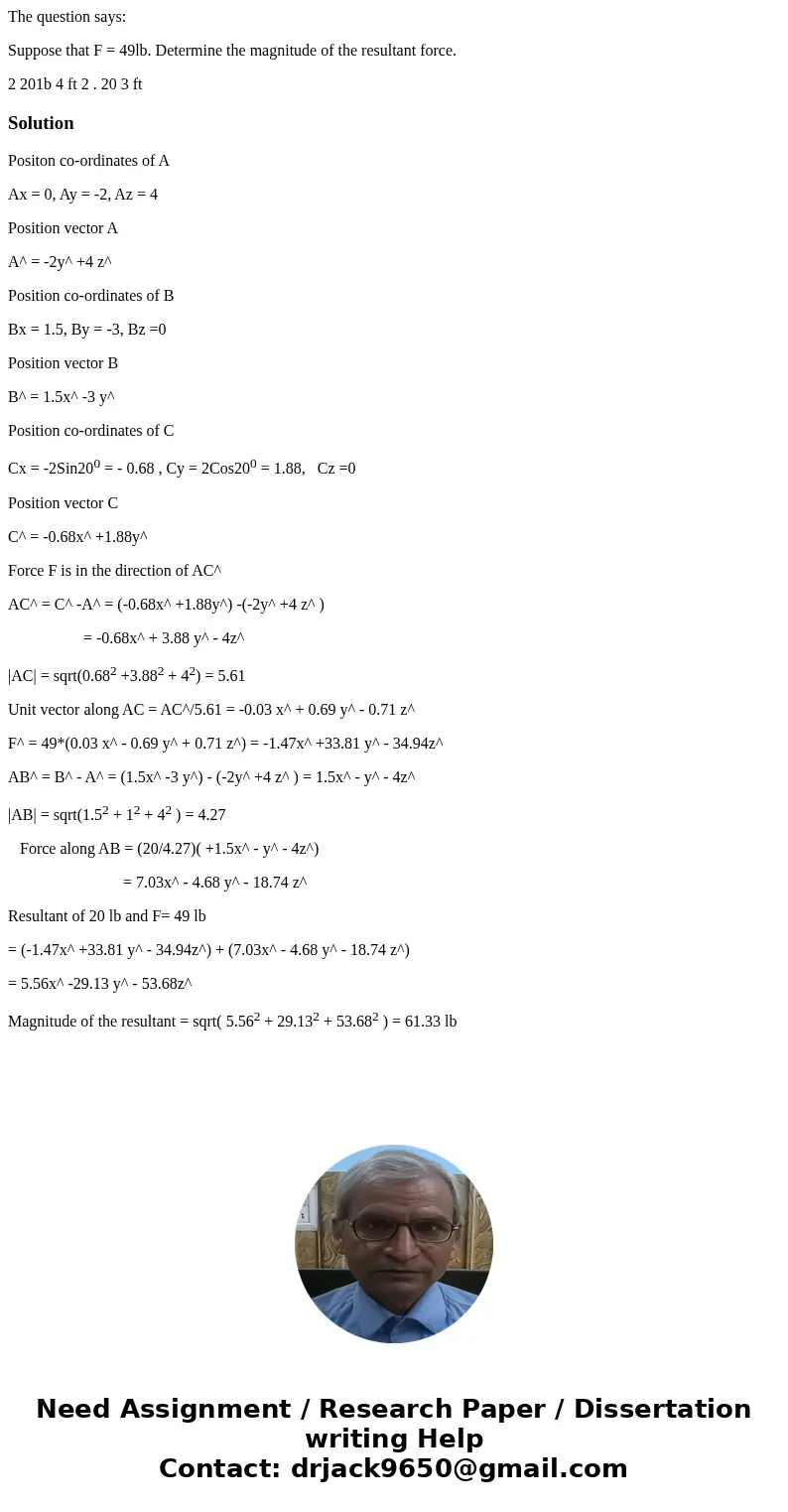The question says Suppose that F 49lb Determine the magnitu
The question says:
Suppose that F = 49lb. Determine the magnitude of the resultant force.
2 201b 4 ft 2 . 20 3 ftSolution
Positon co-ordinates of A
Ax = 0, Ay = -2, Az = 4
Position vector A
A^ = -2y^ +4 z^
Position co-ordinates of B
Bx = 1.5, By = -3, Bz =0
Position vector B
B^ = 1.5x^ -3 y^
Position co-ordinates of C
Cx = -2Sin200 = - 0.68 , Cy = 2Cos200 = 1.88, Cz =0
Position vector C
C^ = -0.68x^ +1.88y^
Force F is in the direction of AC^
AC^ = C^ -A^ = (-0.68x^ +1.88y^) -(-2y^ +4 z^ )
= -0.68x^ + 3.88 y^ - 4z^
|AC| = sqrt(0.682 +3.882 + 42) = 5.61
Unit vector along AC = AC^/5.61 = -0.03 x^ + 0.69 y^ - 0.71 z^
F^ = 49*(0.03 x^ - 0.69 y^ + 0.71 z^) = -1.47x^ +33.81 y^ - 34.94z^
AB^ = B^ - A^ = (1.5x^ -3 y^) - (-2y^ +4 z^ ) = 1.5x^ - y^ - 4z^
|AB| = sqrt(1.52 + 12 + 42 ) = 4.27
Force along AB = (20/4.27)( +1.5x^ - y^ - 4z^)
= 7.03x^ - 4.68 y^ - 18.74 z^
Resultant of 20 lb and F= 49 lb
= (-1.47x^ +33.81 y^ - 34.94z^) + (7.03x^ - 4.68 y^ - 18.74 z^)
= 5.56x^ -29.13 y^ - 53.68z^
Magnitude of the resultant = sqrt( 5.562 + 29.132 + 53.682 ) = 61.33 lb

 Homework Sourse
Homework Sourse